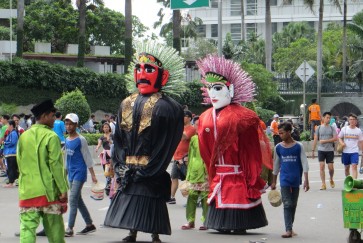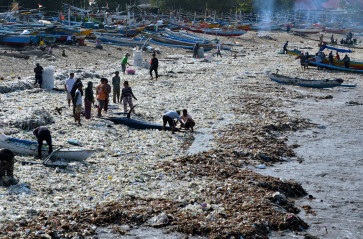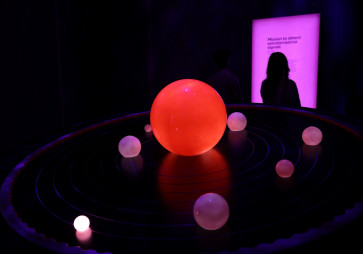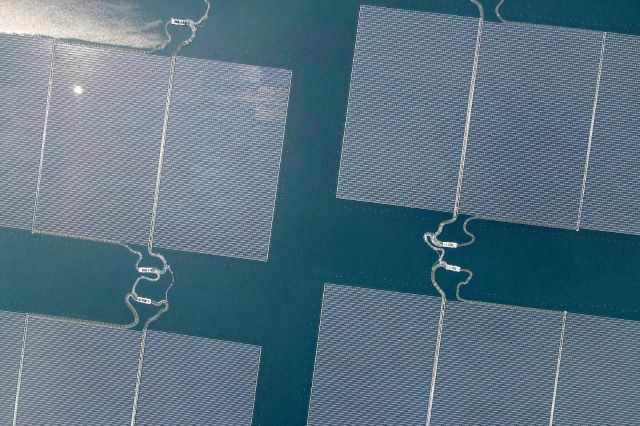`Cap Go Meh' strengthens ties of friendship and brotherhood
For Andi Wirakusuma, 45, celebrating Cap Go Meh is a long-held family tradition
Change text size
Gift Premium Articles
to Anyone

For Andi Wirakusuma, 45, celebrating Cap Go Meh is a long-held family tradition.
"That is why I also take my children to the event every year," said the father of three, who attended the celebration in Kemoro Island, South Sumatra, last week.
The island is located in the middle of Musi River, 5 kilometers from the popular Ampera Bridge.
Andi used the occasion to meet members of his extended families, relatives and friends, thus strengthening friendship and brotherhood.
"It's rare opportunity. That's why we have this event, to make and meet friends."
The celebration of Cap Go Meh or Yuan Xiao Jie 2561 was held at the Hok Ceng Bio temple on the island.
Celebrated every 15th day, or the last day, of the Chinese New Year Imlek celebration, the event included traditional ballet performance, barongsai (lion dance), liong (dragon dance) and tanjidor.
"Visitors are not just coming from South Sumatra but also from Batam, Riau and Bangka as well as from the neighboring countries of Singapore and Malaysia," chairman of the Tridharma Councils' South Sumatra chapter Chandra Husin said.
Kemaro Island has been a regular venue to celebrate Cap Go Meh in Palembang, due to its attractions including the graves of Siti Aisyah and Prince Ceng Ho.
Many of the Chinese-Indonesian community in the region believe that prayers said in that place would be answered.
Spectators had flocked the site since the afternoon although the peak celebration was only held at midnight.
Thanks to the celebration, the only access road to the site was completely jammed.
"Historically, Cap Go Meh was to celebrate the first full moon of every New Year, during which Chinese people held big parties and celebrations," Chandra said.
He added during such celebrations Chinese people used to install colorful decorative lamps, which is why the event was often referred to as the decorative lamp celebration (Yuanxi, Yuanye or Shang in Chinese).
- JP/Khairul Saleh
Your Opinion Matters
Share your experiences, suggestions, and any issues you've encountered on The Jakarta Post. We're here to listen.
Thank you
Thank you for sharing your thoughts. We appreciate your feedback.









